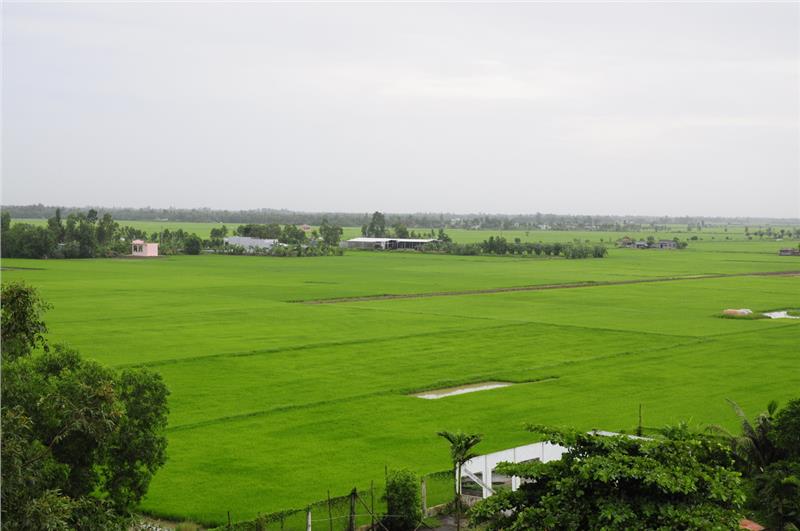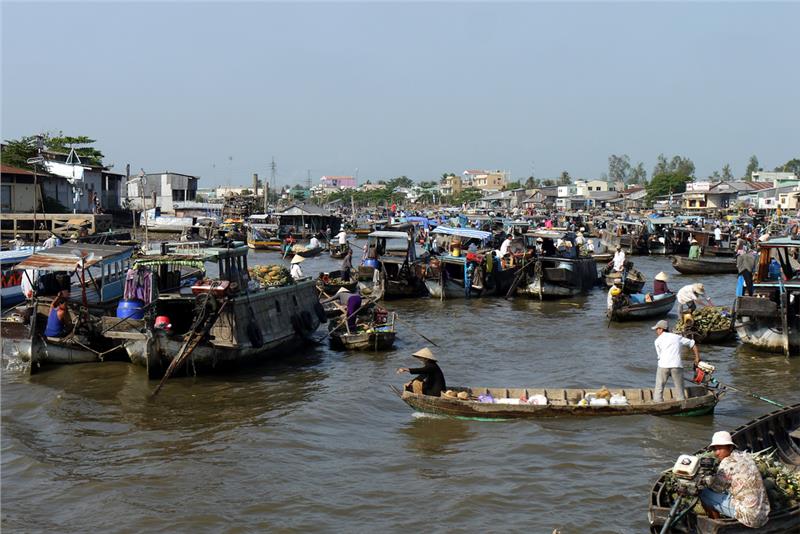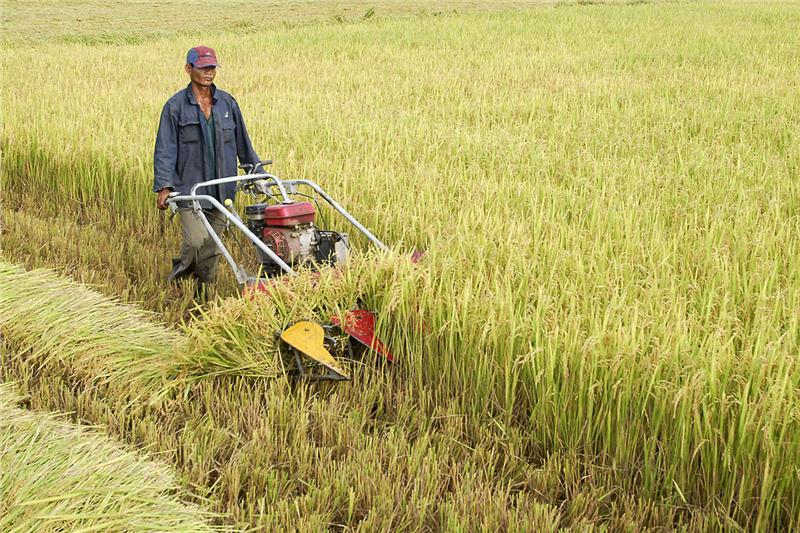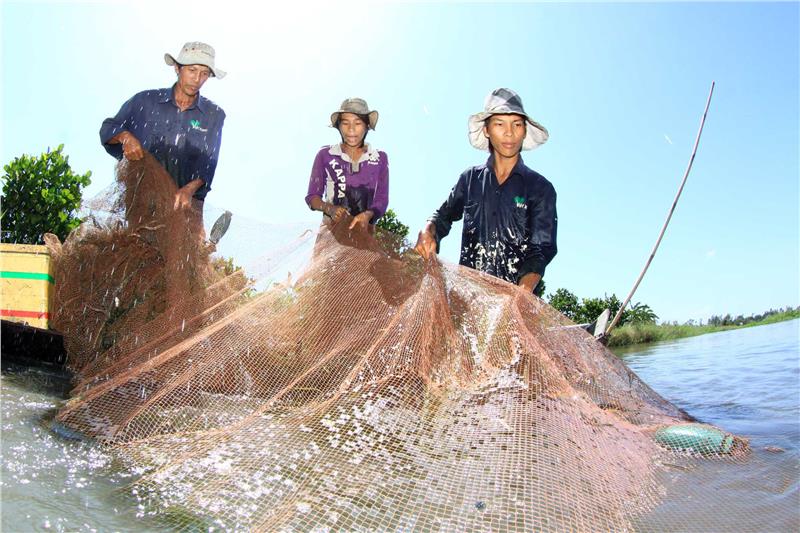Mekong River Delta in Vietnam has a total area of about 39,734km2, consists of 13 provinces and cities with the population of over 17 million of people. Mekong River Delta has an advantageous geographical position near the South China Sea. The potential of this region is its strategic position in socio-economic development, defense and security, young and abundant labor force. Annually, Mekong River Delta contributes 22% to Vietnam GDP, which confirms its important role in agricultural and fishery production (52% of national fishery). Over 50% of rice volume is produced in this region, comprising 90% of rice export.

Located at the end of Indochina Peninsula, adjacent to key economic area in Southern Vietnam, Mekong River Delta has an important and tight two-way relationships with other regions in Vietnam. Cambodia and this region of Vietnam are places where Mekong River flows. This is a favorable condition to exchange and cooperate with other countries in this peninsula. Situating in the southwest of Vietnam with a 732-kilometer coastline, the region possesses many islands as Tho Chu Island, Phu Quoc Island; they are exclusive economic zone bordering the South China Sea and Thailand Gulf. The region is located in the area of international maritime and air traffic between South Asia and Southeast Asia, as well as between Australia and other islands in the Pacific. This position is very important in international exchanges. Climate in this region is portrayed by a tropical climate combined with sub-equatorial features. Elements of climate in Mekong River Delta is suitable for biological growth and development. They are prerequisite for intensification and increasing crops.

Mekong River Delta Vietnam has advantages of agricultural development with main soil groups. Alluvial soil accounts for about 29.7% of the region's natural land, and about 1/3 of the country alluvial soil. This soil is suitable for crops such as rice, fruits, vegetables, and short-term industrial trees. Alkaline soil in this region accounts for about 1.2 million ha (40%) throughout the area. Gray soil comprises about 3.4%; besides, there are some other types of soil such as sandy soil, peat, red and yellow soil, ... occupying an insignificant area of about 0.9%. In general, the soil here is very favorable for agricultural development such as planting rice, coconut trees, sugarcanes, pineapples, and other fruit trees. This region possesses a long coastline of 732km with many estuaries and bays. Sea in this region contains many valuable marine creatures in large reserves. There are many islands and archipelagos with high economic potential as Tho Chu and Phu Quoc. In addition, coastal mangrove system has a high economic value.
However, there are some downsides affecting the economic development in Mekong River Delta in particular and Vietnam economy in general. The amount of acid sulphate soil in this region occupies in a large area, affecting farming. Moreover, during rainy season, the amount of water in rivers is high, resulting in flooding in low-lying areas such as Dong Thap Muoi and Long Xuyen Quadrangle. In dry season, the low level of water triggers tidal encroachment into plain areas, causing severe salinity. Furthermore, the groundwater regime is complex, largely at the depth of 100m. If exploitation is conducted too much, it may cause serious salinity in the region. Mineral resources in the region are not significant; most of them are limestone, sand, gravel, and peat...
Mekong River Delta has a great advantage in social economic development, especially in rice farming, fruit planting and tourism. This is known as the largest granary of Vietnam. The region also has a great potential for tourism development. There are some national tourist destinations in this region as Can Tho tourist destination with Tay Do nuances, Ca Mau mangrove ecosystem, and Phu Quoc Island.

Agricultural sector is the main industry of the area, contributing greatly in Vietnam agriculture. Most provinces' agriculture accounts for over 50% of the provincial GDP. In recent years, commodity production oriented agriculture has been improved along with the diversification of crops, livestocks and processing. In structure of agriculture in Mekong Delta, food crops occupies an absolute domination. The average productivity per capital in this region is the highest with 850kg per year. Fruit area in recent years tends to increase; currently there are about 170 thousand of fruit trees. Fruit trees are planted 3 types: garden, mixed garden, and specialized garden. Husbandry in this region is relatively well developed with the proportion of pigs accounting for 14.2% of the national herd, but still small compared to the potential of the region. Feeding ducks is traditional work to gain meat, eggs and feathers for export. The proportion of ducks makes up for 25.1% of the country's poultry, mostly in Bac Lieu, Ca Mau, Can Tho, Soc Trang, Vinh Long, and Tra Vinh. Fishery of the region has grown sharply in both production and exports. Output value of fishery accounts for 42-45% of the total value, and 37-42% of exports in the country. In term of aquaculture, the aqua-cultural area is 294.1 ha (21.2%) of the total aqua-cultural area in the country. Also, there are other aquatic creatures with high economic value such as eels, snails, crabs, turtles, tortoise...
The region develops mostly food processing industry with more than 20% value added in the regional industry. However, the output is major in preprocessing quality and low efficiency. Other industries such as textiles, garments, building materials production (12% of industrial benefit of the region), and chemicals have grown rapidly in recent years. Regional industry is distributed mainly in big cities, towns, and provincial capitals.
Mekong Delta has a great potential for tourism development. Thus, the region has several significant national tourist destinations as Can Tho, Ca Mau mangrove ecosystem, Phu Quoc Island; and numerous other tourist attractions such as Long An Museum, and Vam Co River, Cai Be Floating Market, and so on. From these tourist points, clusters of tourism are formed in Can Tho, Tien Giang, Chau Doc, and Nam Can (Ca Mau).

- In the orientation of agricultural development, restructuring economic sector, increasing the proportion of husbandry to 37% in the total value of agricultural production. Building a sustainable ecological agriculture development, increasing productivity of agricultural products; focusing on intensive farming, changing seasonal crops to avoid natural disasters; forming high-yield areas with good quality; focusing on exploiting Dong Thap Muoi, Hau River and Ca Mau Peninsula.
- Implementing afforestation work to restore and protect the ecological environment; forming forest line for coastal protection; conducting afforestation and protection in Bay Nui region; remaing areas of melaleuca trees and coconut; protecting mangroves; gradually implementing horticulture and forestry production, feeding shrimp and reforestation.
- Taking advantage of the long coastline, large fishing grounds, and high skilled labor in aquaculture and fisheries; increasing investment in this sector to achieve the goal of contributing 50% of aquatic exports of the country; developing aquaculture with high-value seafood such as shrimp, crab and other specialties.
- Focusing on the development of food processing industry; developing apparel, clothing, textiles, footwear, electronics engineering, and chemical; investing in industrial areas such as Tra Noc, Nam Hung Phu, Vi Thanh, and Ben Luc; concentrating on developing industry utilizing local labor.
- Establishing commercial centers, supermarkets, and market network to create a favorable environment for business; constructing Can Tho as a center for inter-regional trade; constructing of commercial centers such as Tan An, Cao Lanh, My Tho, Long Xuyen, My Tho, Rach Gia, Soc Trang, Tra Vinh, Vinh Long, Ben Tre, Ca Mau, Bac Lieu, Ha Tien, Chau Doc to supply goods for production and life
- Exploiting the advantages of geographical position to develop types of tourism, gardens, eco-tourism associated with tourism in Ho Chi Minh City; tourism should be associated with nature conservation.
